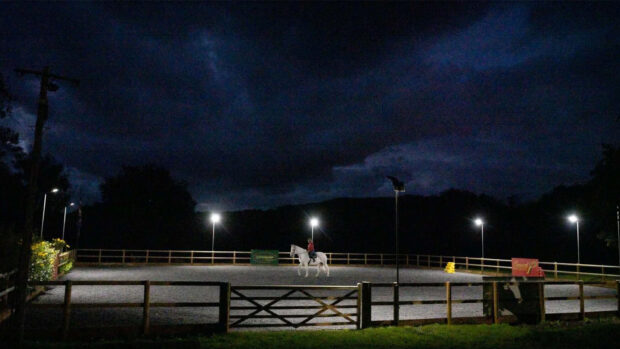The estimated cost of tack theft each year is impossible to gauge accurately, although it is estimated that 90% of all recorded crime is property related, and more than £1 million worth of laptops are stolen every week, with saddles being of a similar per item value.
About 50% of policy-holders in general terms underestimate the value of their insured items, with 50% of burgled premises being victims of being targeted a second time.
Without positive and provable means of identification, stolen items can be returned to the thief because ownership cannot be proved.
The most popular tack to be stolen is that which is left vulnerable, and is easy to sell on because it is not readily identifiable, such as saddles, bridles and rugs.
Large items such as horseboxes require more planning to steal, but are also more difficult to dispose of, but because of their intrinsically higher value, they are attractive to a professional thief.
Most common mistakes are leaving the tack in an undefended environment, such as by temporary stables at a show or beside the lorry during a busy day, or in an unlocked tack room.
Occasions such as leaving tack out to dry, or leaving it in an unattended stable are prime candidates for theft.
Any security measures which the owner takes are better than nothing, but if you think where your weak spots are and address them, it’s a good start, but most security measures only protect the items up to the point of theft, not beyond.
Simple security measures for the tack room include good quality windows and doors with the same standard of locks you would employ in your home.
Metal bars across the windows are a good idea, and a simple burglar alarm is very useful, but only if it can be heard. It would be of very little use in a remote stable block.
A common sense approach is what is required,and identifying the weak spots is a good place to start.
This applies all the time whether at a show, riding, or at home.
If security measures are put in place, advertise the fact, without giving specific details of the equipment used.
The deterrent value of warning labels must not be underestimated. If they make the thief go elsewhere they have done their job.
The majority of stolen tack will turn up for sale quickly either at auctions or on social media. If an item is microchipped and then turns up for sale at an auction, it can be scanned with a reader and the chip number checked against the national database. This would prove not only who the owner is, but where and when it was stolen.
Because the entries on a database are time locked this proves ownership to an evidential standard. Microchipping has proved to be extremely effective in asset identification.



